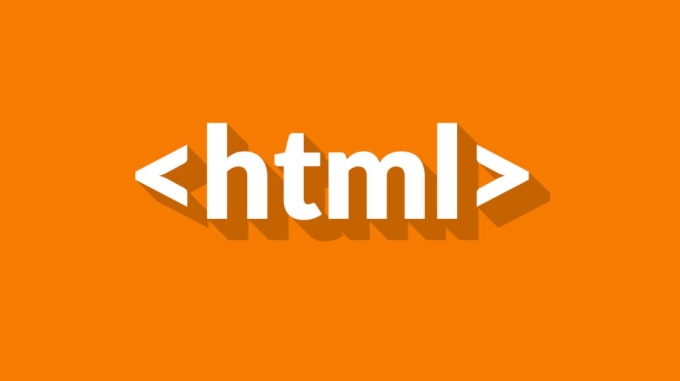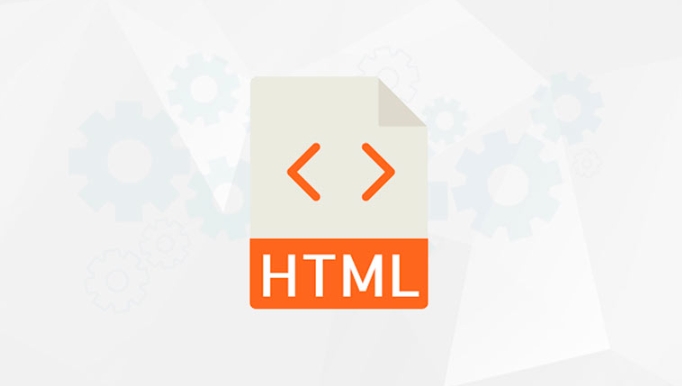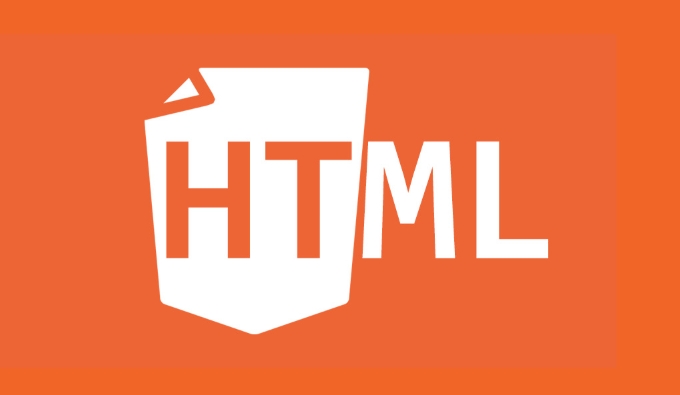tabindex is a key attribute in HTML that controls whether elements can be focused and sequenced through the keyboard tab key. Its core role is reflected in: 1. tabindex="0" enables elements to focus and participate in tab navigation in the natural order of DOM; 2. tabindex="-1" elements cannot be tab-focused but can be focused through JavaScript; 3. Although the tabindex of positive integers can be defined in order, it is not recommended to avoid confusion. Correct application involves adding tabindex to interactive elements in custom components, such as adding tabindex="0" to div or span to achieve focus capability. At the same time, you should be careful to avoid abuse of tabindex="0" or forced sorting to cause unnecessary tab stops and logical confusion. Complex UI components often combine ARIA attributes to improve barrier-free experience, such as role and aria-label and tabindex="0" to ensure the accessibility of icon buttons. In short, add tabindex manually only if necessary, prioritize the default order or restructuring layouts through CSS and DOM for optimal user experience and accessibility support.

In web development, a good keyboard navigation experience is very important for both barrier-free access and user experience. tabindex is a key attribute in HTML that controls whether elements can be focused through the keyboard tab key. Use it reasonably to allow the page to operate smoothly without relying on the mouse.

What is tabindex ?
tabindex attribute determines whether an element can gain focus through the keyboard's Tab key, and its focus order. By default, not all elements can be tabbed, such as <div> , <code><span></span> and other structural tags, unless you actively add tabindex to them.
- tabindex="0" : The elements can be focused and participate in tab navigation in the natural order of the DOM.
- tabindex="-1" : The element cannot be focused through the tab key, but it can be focused through JavaScript calling
.focus()method. - tabindex="Arbitrary positive integer" : The element can be focused, and the tab order is determined by the size of the numerical value, the smaller the number, the higher the number. But this usage is not recommended, it can easily cause confusion.
How to use tabindex correctly to improve accessibility
When building custom components (such as buttons and drop-down menus), we often need to make tab focus capabilities for some originally unfocused elements. For example:

<div tabindex="0">This is a focusable div</div>
This way the user can use the Tab key to focus on this div. However, it is important to note:
- Don't abuse
tabindex="0"and only add to elements that really need interaction. - If it is purely displayed content, do not add
tabindex, otherwise it will interfere with the operation of screen reader users.
For component development, such as the buttons or switch panels encapsulated in React or Vue, remember to add a suitable tabindex to the interactive area to ensure that keyboard users can also use it normally.

Avoid common pitfalls
Sometimes, in order to "make an element focus", developers directly add tabindex="0" to it, but ignore the actual purpose. This can lead to several problems:
- A large number of unnecessary tab stops appear on the page, affecting efficiency.
- The content read by screen readers becomes lengthy and users can't tell the point.
- Using
tabindex="1"andtabindex="2"to forcibly change the tab order may disrupt the original logic of the page, especially in multi-language or multi-layout scenarios.
So suggestion:
- Try to maintain the default tab order.
- Only when native semantic tags (such as
<button>,<a>) cannot meet the needs, should you consider manually addingtabindex. - If you have to set the tab order, use
orderattribute of CSS or adjust the DOM structure first, rather than forcefully sorting withtabindex.
Flexible application in complex components
When implementing some complex UI components, such as tabs, pop-ups, or tree menus, tabindex is often used with ARIA properties to ensure compatibility between keyboards and assistive technologies.
For example, a clickable icon button might look like this:
<span role="button" tabindex="0" aria-label="Close">×</span>
Here we used:
-
role="button"to indicate its function. -
tabindex="0"allows it to be tab focus. -
aria-labelillustrates its behavior, which facilitates screen readers to recognize.
This combination is very practical when no native buttons are available, but also be careful to test whether their behavior is as expected.
Basically that's it. The rational use of tabindex is not particularly complicated, but it is easy to ignore the details. Just remember: not all elements require tab focus, only those parts that require user interaction should be added.
The above is the detailed content of HTML `tabindex` Attribute for Keyboard Navigation. For more information, please follow other related articles on the PHP Chinese website!

Hot AI Tools

Undress AI Tool
Undress images for free

Undresser.AI Undress
AI-powered app for creating realistic nude photos

AI Clothes Remover
Online AI tool for removing clothes from photos.

Clothoff.io
AI clothes remover

Video Face Swap
Swap faces in any video effortlessly with our completely free AI face swap tool!

Hot Article

Hot Tools

Notepad++7.3.1
Easy-to-use and free code editor

SublimeText3 Chinese version
Chinese version, very easy to use

Zend Studio 13.0.1
Powerful PHP integrated development environment

Dreamweaver CS6
Visual web development tools

SublimeText3 Mac version
God-level code editing software (SublimeText3)

Hot Topics
 Applying Semantic Structure with article, section, and aside in HTML
Jul 05, 2025 am 02:03 AM
Applying Semantic Structure with article, section, and aside in HTML
Jul 05, 2025 am 02:03 AM
The rational use of semantic tags in HTML can improve page structure clarity, accessibility and SEO effects. 1. Used for independent content blocks, such as blog posts or comments, it must be self-contained; 2. Used for classification related content, usually including titles, and is suitable for different modules of the page; 3. Used for auxiliary information related to the main content but not core, such as sidebar recommendations or author profiles. In actual development, labels should be combined and other, avoid excessive nesting, keep the structure simple, and verify the rationality of the structure through developer tools.
 What are the essential HTML elements for structuring a webpage?
Jul 03, 2025 am 02:34 AM
What are the essential HTML elements for structuring a webpage?
Jul 03, 2025 am 02:34 AM
The web page structure needs to be supported by core HTML elements. 1. The overall structure of the page is composed of , , which is the root element, which stores meta information and displays the content; 2. The content organization relies on title (-), paragraph () and block tags (such as ,) to improve organizational structure and SEO; 3. Navigation is implemented through and implemented, commonly used organizations are linked and supplemented with aria-current attribute to enhance accessibility; 4. Form interaction involves , , and , to ensure the complete user input and submission functions. Proper use of these elements can improve page clarity, maintenance and search engine optimization.
 Implementing client-side form validation using HTML attributes.
Jul 03, 2025 am 02:31 AM
Implementing client-side form validation using HTML attributes.
Jul 03, 2025 am 02:31 AM
Client-sideformvalidationcanbedonewithoutJavaScriptbyusingHTMLattributes.1)Userequiredtoenforcemandatoryfields.2)ValidateemailsandURLswithtypeattributeslikeemailorurl,orusepatternwithregexforcustomformats.3)Limitvaluesusingmin,max,minlength,andmaxlen
 Implementing Clickable Buttons Using the HTML button Element
Jul 07, 2025 am 02:31 AM
Implementing Clickable Buttons Using the HTML button Element
Jul 07, 2025 am 02:31 AM
To use HTML button elements to achieve clickable buttons, you must first master its basic usage and common precautions. 1. Create buttons with tags and define behaviors through type attributes (such as button, submit, reset), which is submitted by default; 2. Add interactive functions through JavaScript, which can be written inline or bind event listeners through ID to improve maintenance; 3. Use CSS to customize styles, including background color, border, rounded corners and hover/active status effects to enhance user experience; 4. Pay attention to common problems: make sure that the disabled attribute is not enabled, JS events are correctly bound, layout occlusion, and use the help of developer tools to troubleshoot exceptions. Master this
 What are self-closing tags in HTML?
Jul 02, 2025 pm 02:55 PM
What are self-closing tags in HTML?
Jul 02, 2025 pm 02:55 PM
Self-closing tags are elements in HTML that do not require closed tags because they do not contain content. Common examples include: ① Insert pictures; ② Add line breaks; ③ Create horizontal lines; ④ Define form input; ⑤ Link external resources; ⑥ Provide metadata. These tags work through attributes such as or. There are two correct ways to write: standard HTML syntax, such as XHTML style, but HTML5 recommends the former. Note that you cannot use self-closed form on labels that require the package content. If the error is wrong, it should be changed to a correctly closed Hello. Proper use of self-closing tags helps keep your code simple and efficient, and improves compatibility with other tools such as frameworks.
 How to group options within a select dropdown using html?
Jul 04, 2025 am 03:16 AM
How to group options within a select dropdown using html?
Jul 04, 2025 am 03:16 AM
Use tags in HTML to group options in the drop-down menu. The specific method is to wrap a group of elements and define the group name through the label attribute, such as: 1. Contains options such as apples, bananas, oranges, etc.; 2. Contains options such as carrots, broccoli, etc.; 3. Each is an independent group, and the options within the group are automatically indented. Notes include: ① No nesting is supported; ② The entire group can be disabled through the disabled attribute; ③ The style is restricted and needs to be beautified in combination with CSS or third-party libraries; plug-ins such as Select2 can be used to enhance functions.
 Adding captions and tracks to HTML video and audio elements.
Jul 02, 2025 pm 04:05 PM
Adding captions and tracks to HTML video and audio elements.
Jul 02, 2025 pm 04:05 PM
To embed video or audio with subtitles and audio tracks into a web page, it can be achieved through HTML native functionality. 1. Use tags to add subtitles files in WebVTT format and set the kind, srclang and label attributes; 2. Support multi-language subtitles through multiple elements, and use the default attribute to set the default language; 3. Multi-tracks can control multiple element switching through JavaScript, or use more complex media extension solutions; 4. Pay attention to browser compatibility, path configuration and format verification to ensure normal operation on different devices and provide backup solutions.
 Debugging common HTML validation errors.
Jul 03, 2025 am 02:41 AM
Debugging common HTML validation errors.
Jul 03, 2025 am 02:41 AM
When encountering HTML verification errors, you must first clarify the problem and correct it according to the specifications. 1. When the required attributes are missing, the src and alt and a href of img should be completed; 2. When the tag nesting is incorrect, the structure should be clarified and the tags should be closed correctly to avoid confusion in nesting block-level elements; 3. When using invalid or discarded tags, you should refer to the MDN document to replace it with modern writing methods, such as replacing center and font with CSS; 4. When character encoding problems, add metacharset="UTF-8" and ensure that the file is saved in UTF-8 format to solve it.






